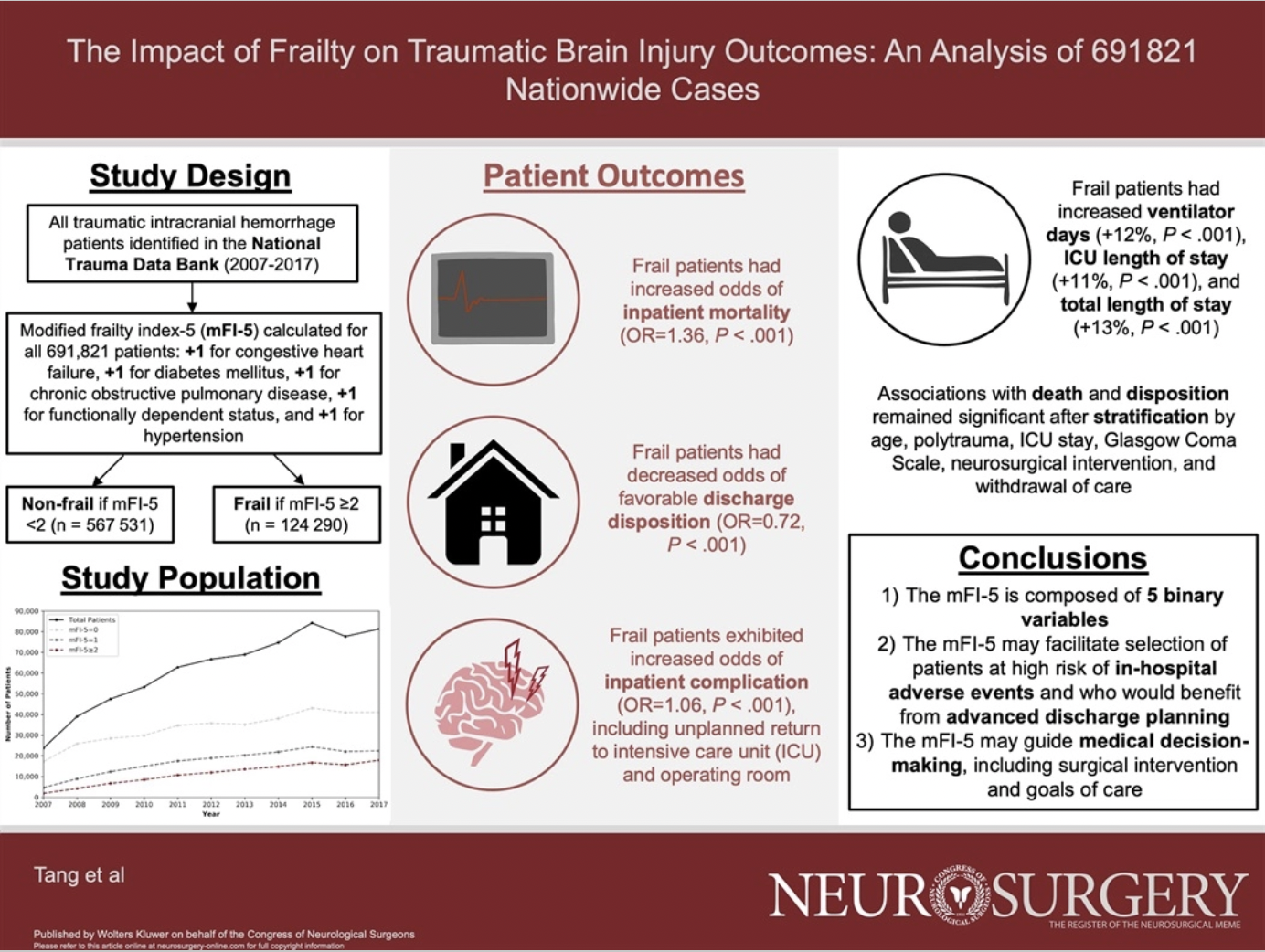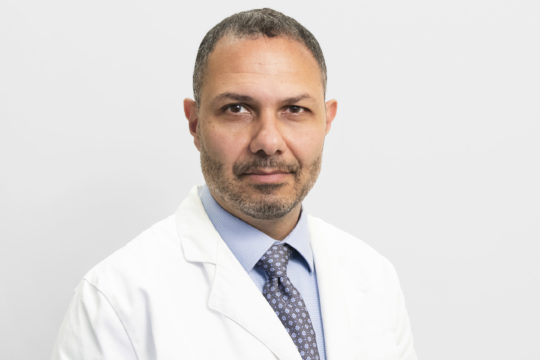The Impact of Frailty on Traumatic Brain Injury Outcomes: An Analysis of 691 821 Nationwide Cases
Oliver Y. Tang BS; Belinda Shao MD, MPH; Anna R. Kimata BS; Rahul A. Sastry MD; Joshua Wu BA; Wael F. Asaad MD, PhD

 ABSTRACT
ABSTRACT
BACKGROUND:
Frailty, a decline in physiological reserve, prognosticates poorer outcomes for several neurosurgical conditions. However, the impact of frailty on traumatic brain injury outcomes is not well characterized.
OBJECTIVE:
To analyze the association between frailty and traumatic intracranial hemorrhage (tICH) outcomes in a nationwide cohort.
METHODS:
We identified all adult admissions for tICH in the National Trauma Data Bank from 2007 to 2017. Frailty was quantified using the validated modified 5-item Frailty Index (mFI-5) metric (range = 0-5), with mFI-5 ≥2 denoting frailty. Analyzed outcomes included in-hospital mortality, favorable discharge disposition, complications, ventilator days, and intensive care unit (ICU) and total length of stay (LOS). Multivariable regression assessed the association between mFI-5 and outcomes, adjusting for patient demographics, hospital characteristics, injury severity, and neurosurgical intervention.
RESULTS:
A total of 691 821 tICH admissions were analyzed. The average age was 57.6 years. 18.0% of patients were frail (mFI-5 ≥ 2). Between 2007 and 2017, the prevalence of frailty grew from 7.9% to 21.7%. Frailty was associated with increased odds of mortality (odds ratio [OR] = 1.36, P < .001) and decreased odds of favorable discharge disposition (OR = 0.72, P < .001). Frail patients exhibited an elevated rate of complications (OR = 1.06, P < .001), including unplanned return to the ICU (OR = 1.55, P < .001) and operating room (OR = 1.17, P = .003). Finally, frail patients experienced increased ventilator days (+12%, P < .001), ICU LOS (+11%, P < .001), and total LOS (+13%, P < .001). All associations with death and disposition remained significant after stratification for age, trauma severity, and neurosurgical intervention.
CONCLUSION:
For patients with tICH, frailty predicted higher mortality and morbidity, independent of age or injury severity.
Read the Full Text Here


